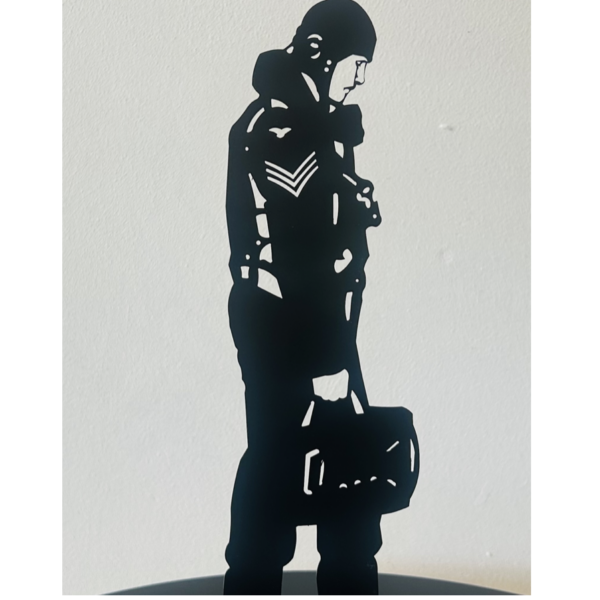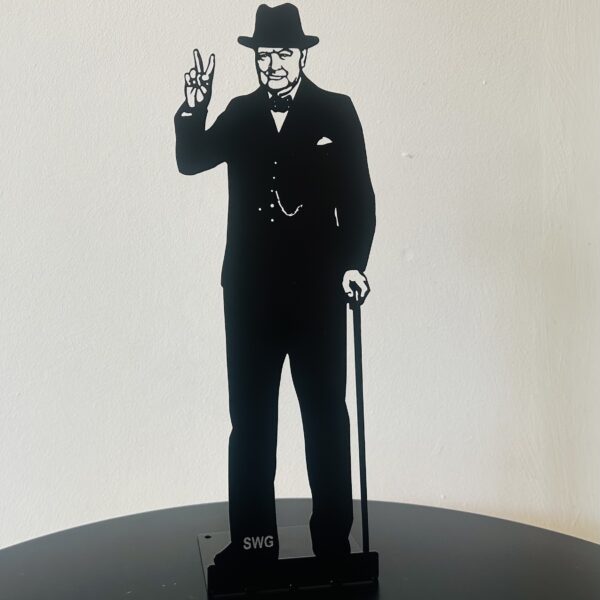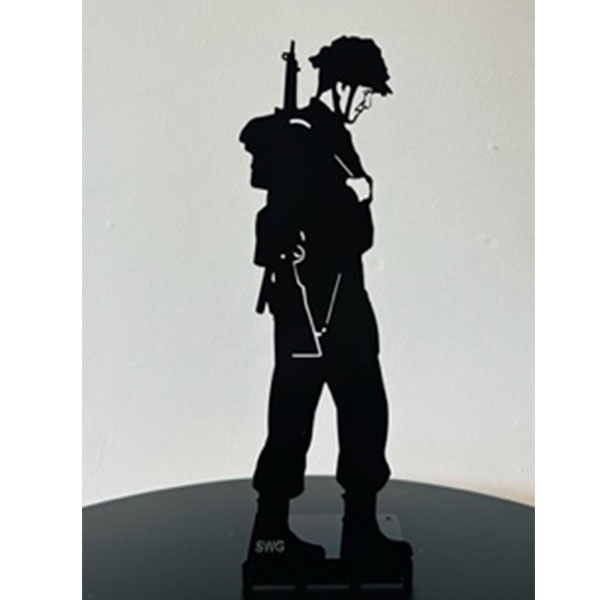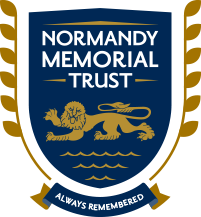
Reginald Robert Smith #2
The story and photographs are shared by the Trust with kind permission from Jan and Frank Noble, daughter and son-in-law of Reg Smith
My wife Janet’s father, Reginald Robert Smith was killed in action with the 7th Battalion, Green Howards in Normandy in 1944. You can read about his part in the Battle of Normandy here. In 1969, Janet (known as Jan) and I first visited her father’s grave in the Commonwealth War Graves Cemetery at Banneville la Campagne, on the outskirts of Caen, Normandy, France. In November 1969, at the end of a three-year posting in Malta, we had decided to drive back to England with our three children (ages 8, 5 and 2) and had been on the road for three weeks, before arriving in Normandy. We found the Military Cemetery at Banneville and went to Reg’s grave. There was a heavy mist at the time, which was in keeping with our emotions.
We were busy for the next 20 years, working and bringing up the children. It was not until the late 1980s that we began to plan returning to Normandy to find how and where Reg had been killed in action. The Green Howards Regimental HQ was very helpful with information and maps about where Reg’s 7th Battalion was around the date of his death on 12th August 1944.
We were by then living in Luxembourg where I had been working for NATO since 1975. Jan’s sister Anne was living in Wales and we invited her in the summer of 1989, to join us in the search for the how and where of Reg’s death. The three of us spent a week in Normandy, first visiting places of interest to D-Day, such as Bayeux and the D-Day beaches. For the last two days of our stay, we concentrated on visiting the area around St Pierre la Vieille and Rousseville, where Reg’s Battalion was in action in August 1944, as shown on the map below of the Green Howards Plan of Attack during 9th to 13th August 1944.
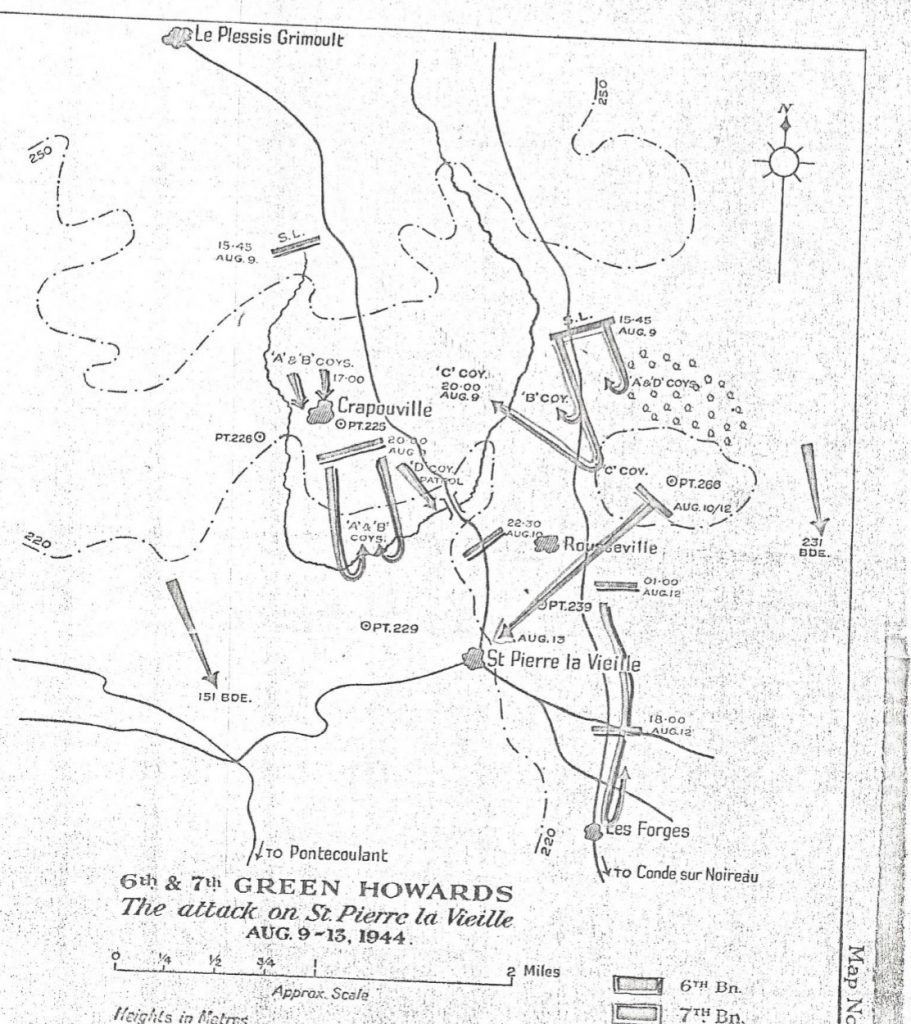
That area is in deepest rural Normandy, very sparsely populated, with only villages and small hamlets. There was of course nothing to indicate the battles which had raged there in 1944, and as we drove around, stopping here and there to look around, we saw no-one. On the very last day of our visit, we again drove around and revisited Rousseville,
It is a very small hamlet and the only person in sight was an elderly man tinkering with an equally old tractor. I spoke to him to tell him we were there to find out where my wife’s father was killed in action with the British Army, on 12th August 1944. (Fortunately, I speak French because M. Cautru spoke no English.) To our astonishment, he immediately said that he had been present there on the 12th August 1944. He was then in his teens and had been hiding in the countryside, at his small family farm during the Occupation, to avoid the Germans. He was there on D-Day and had remained there as the fighting gradually approached from the north. He remembered that on 12th August 1944 two British soldiers had been killed, and one of them had been buried in one of his fields. He then introduced himself as M. Marcel Cautru and invited the three of us into his farmhouse where we met his wife.
M. Cautru then led the way on foot a short distance, to the place in one of his fields where the British soldier had been temporarily buried. The field was approached by a sunken lane typical of the “bocage”.
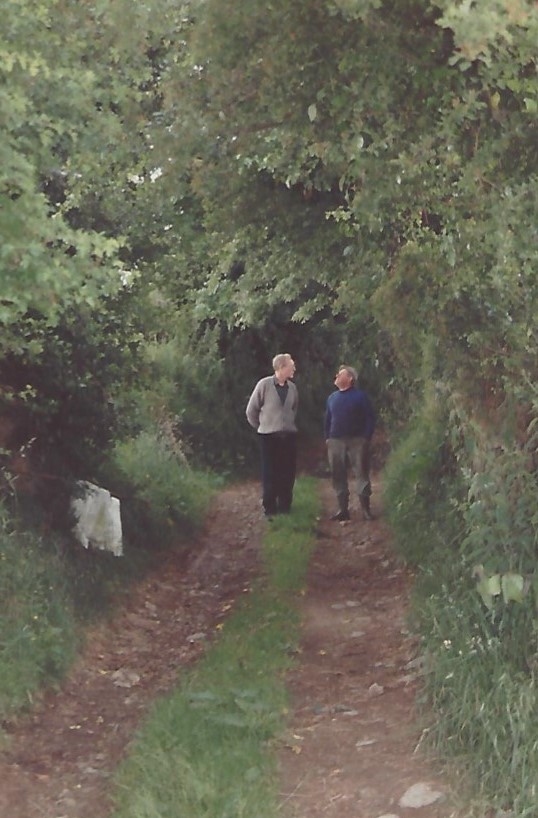
As we stood around the site of the burial in the field, there were mixed emotions. Of the three 7th Btn soldiers who had been killed on the 12th August, here was the place where one of them could have been buried. There was every possibility it could have been Reg. That was an emotional realization.
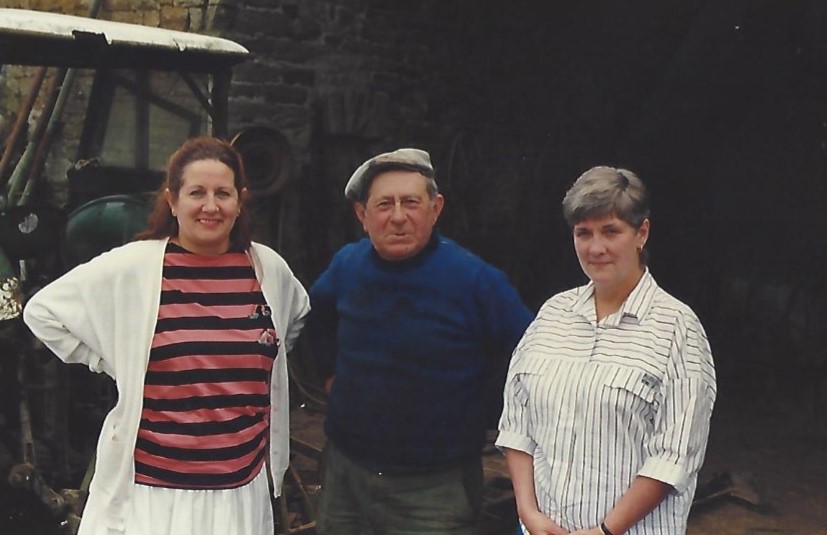
L-R Jan, M. Cautru and Ann
We returned to M. Cautru’s house where we drank his home-brewed cider-like drink. For us it was an exciting but emotional episode, and living eye-witness proof that the Green Howards had really passed this way in the desperate fighting of August 1944. We departed with a feeling of achievement, which I think would have pleased Reg enormously, that his daughters had made a pilgrimage to where he had made his last stand. To complete the pilgrimage, we then visited the British Military Cemetery at Banneville to pay due respects to our father at his grave there.
The next visit to M. Cautru was in 1992 by me and our two sons, Frank and Andrew, both Royal Engineers officers. We had decided to retrace the advance of the Green Howards from their D-Day landing on the beach at La Riviere, via Mont Pincon and Villers Bocage to where Reg was killed. We had maps and information from the Green Howards Regiment HQ.
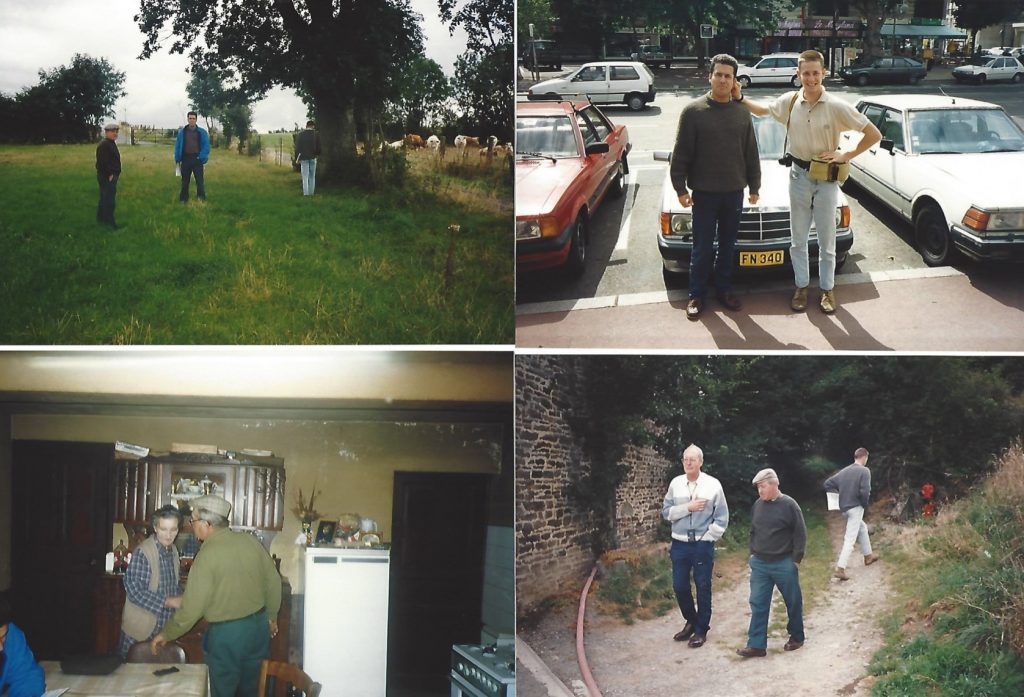
We also visited Reg's grave in Banneville La Campagna. Here is one of his grandsons, Brigadier Frank Robert Noble, at Reg’s grave.
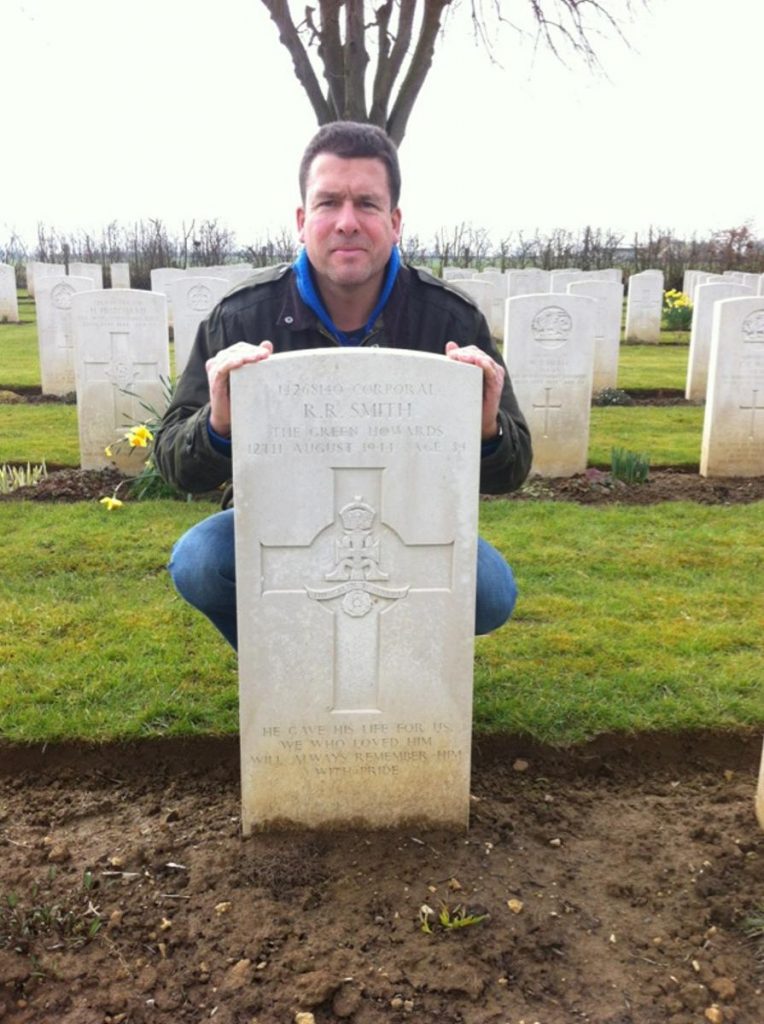
Whether or not we found Reg’s grave in Rousseville, on M. Cautru’s land, is open to question. But the main thing is that we got eyewitness proof from Marcel Cautru that the fighting of the 7th Battalion took place in and around Rousseville, and that Reg was killed there in action on 12th August 1944.
We continue to have family links to Reg's Regiment, the Green Howards, which, in 2006, was amalgamated, along with other Yorkshire regiments, to form the Yorkshire Regiment. Reg's great-grandson, Bertram (Bertie) Noble Southworth, is currently (2021) a 2nd Lieutenant in that very same Yorkshire Regiment. Our family is very proud of that link, as Reg would have been.
FALLEN HEROES
REGINALD ROBERT SMITH
Army • CORPORAL
Green Howards
7th BattalionDIED | 12 August 1944
AGE | 34
SERVICE NO. | 14268140
FALLEN HEROES
REGINALD ROBERT SMITH
Army • CORPORAL
Green Howards
7th BattalionDIED | 12 August 1944
AGE | 34
SERVICE NO. | 14268140




